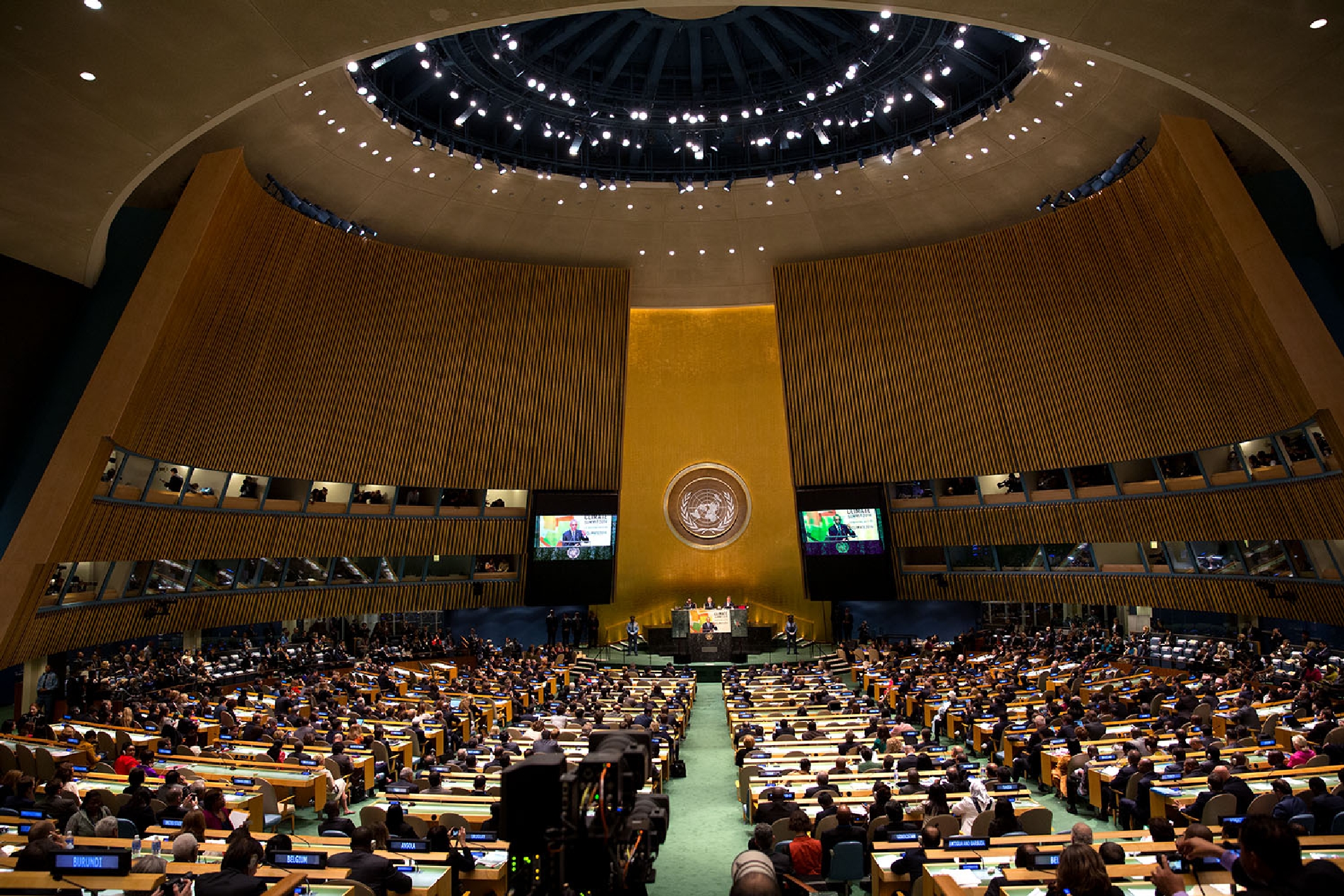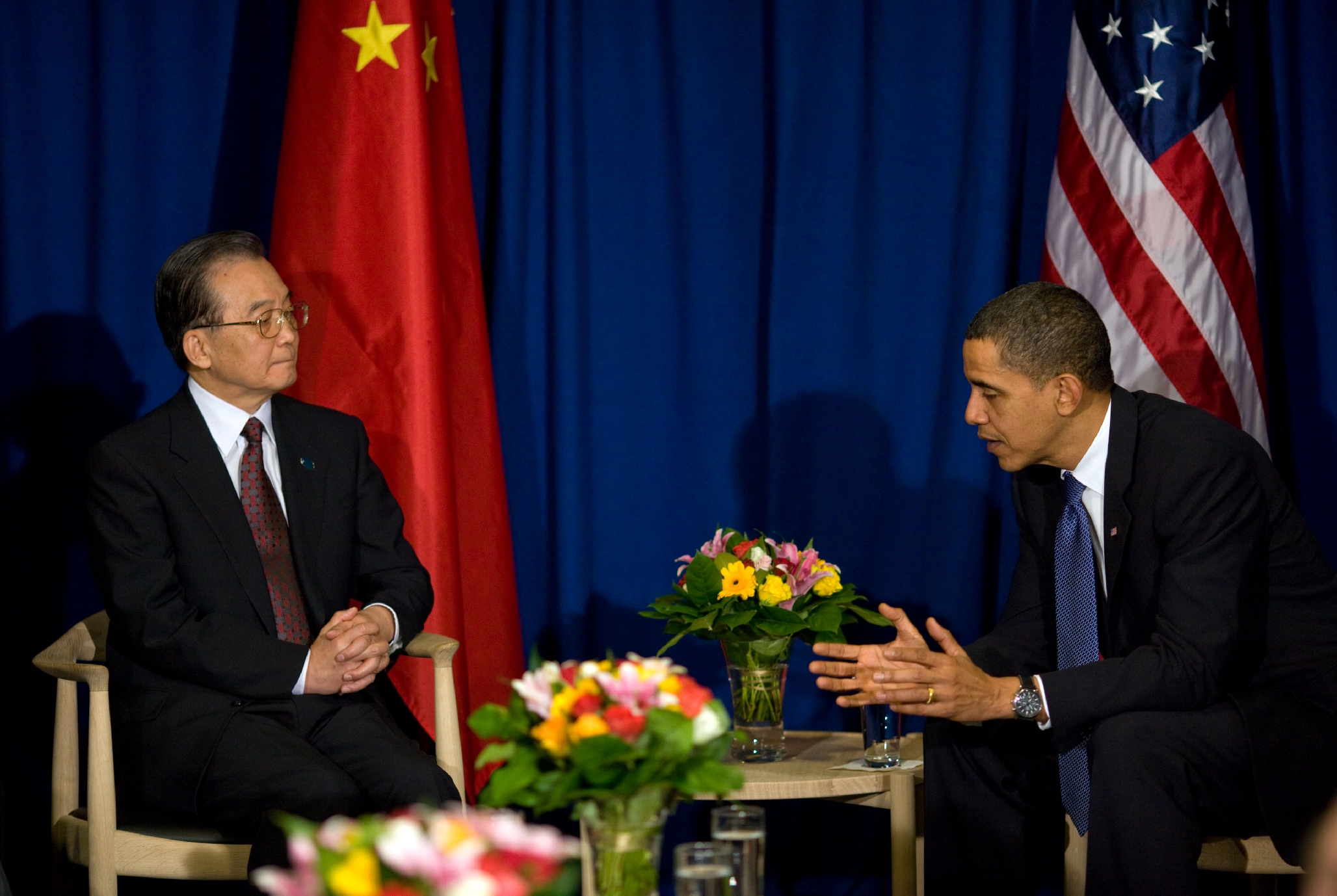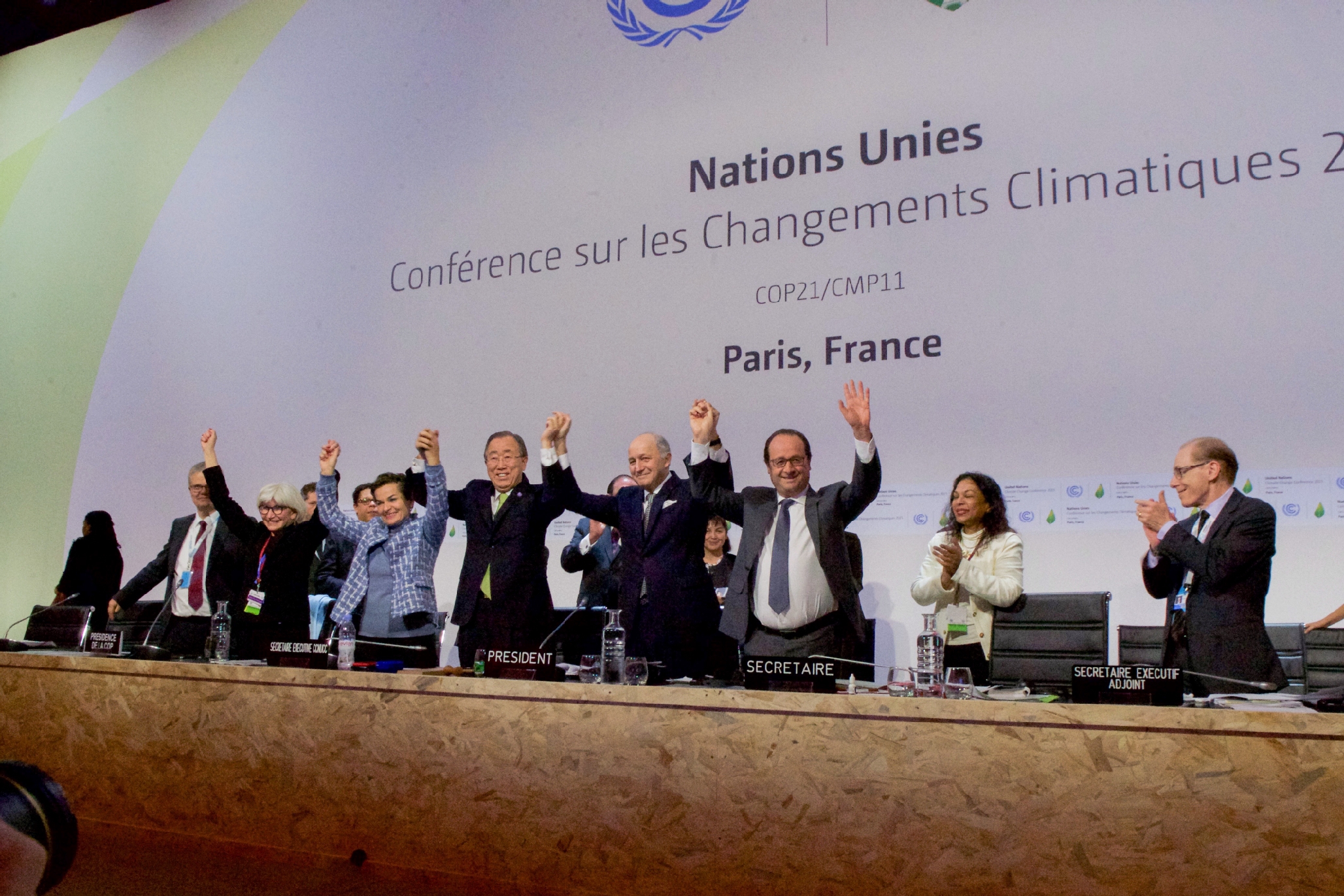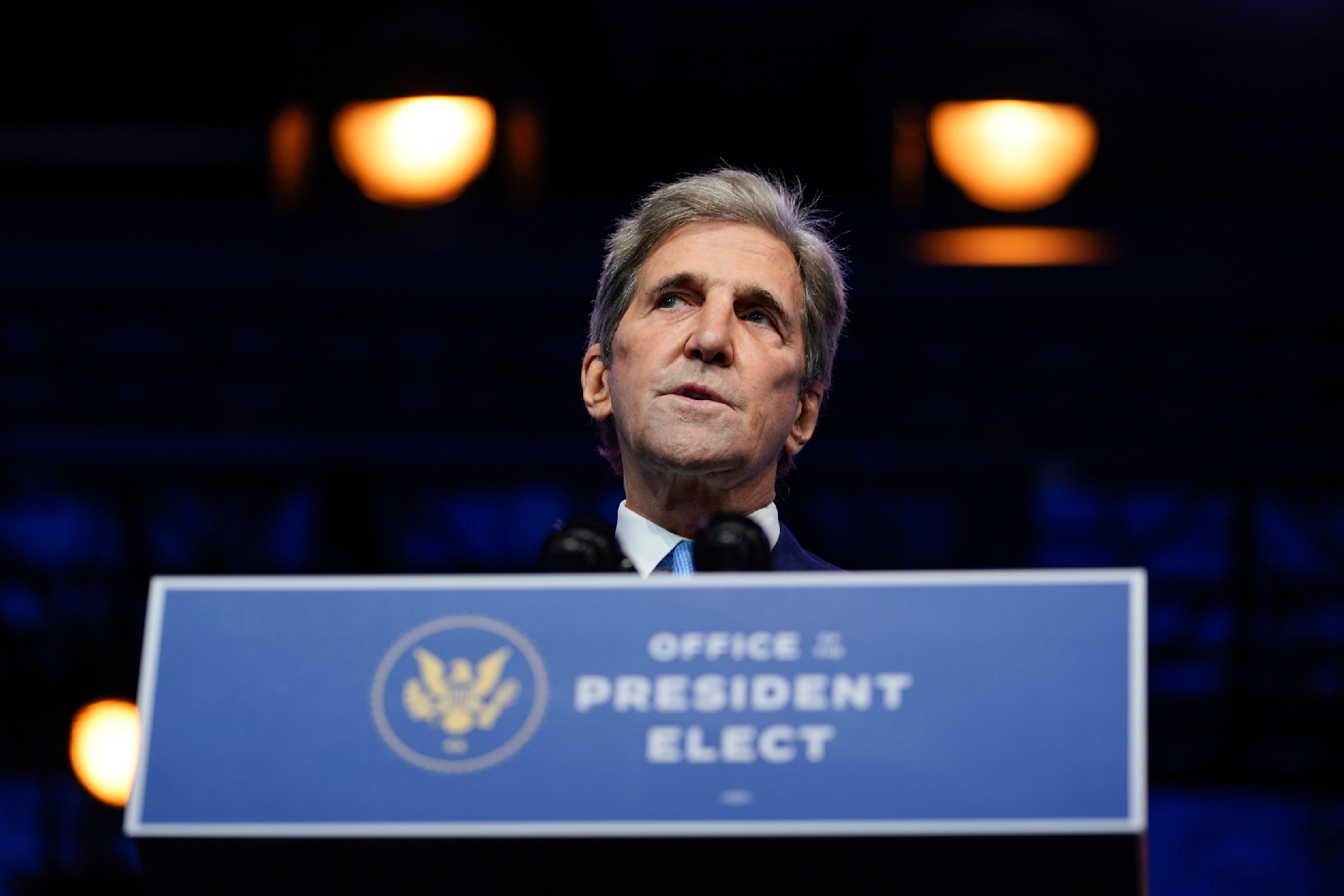Winter 2021
Survive and Advance
– Elan Strait
The Paris Agreement outlasted opposition. U.S. climate leadership depends on reestablishing credibility and collaboration.
When President-elect Joseph Biden takes office on January 20, the United States will only have been out of the Paris Agreement for a total of twelve weeks. It will return – and quickly.
Fortunately, the accords have survived that departure, however brief. But just as U.S. withdrawal was not fatal to the agreement, the planned reentry to the accords will not be a panacea for the global climate regime.
The questions for a new administration set to reengage on climate issues are substantive. Answering them will require understanding why the Paris Agreement was resilient enough to survive, and renewing a sense of what the accords are designed to accomplish.
A United States seeking to reestablish its leadership position on climate issues will need to commit resources and diplomatic energy to make up for lost time. But with the damage to the U.S. reputation and the other crises that President-elect Biden will have to manage, how will that happen?
How Paris Survived
There were no guarantees that the Paris Agreement would survive when President Donald Trump announced in 2017 that he would withdraw the United States from the deal. Understanding why countries remained committed to the pact is key to understand the dynamics that the United States will rejoin, and envision what a new U.S. role is in the global fight against the climate crisis.
Paris has survived for many reasons, not least of which is that it was designed intentionally to be flexible and durable to political shocks.

Yet a flexible and resilient structure would be insufficient without the constituencies that are necessary to nurture it. Increased public attention on the climate crisis, particularly from youth around the world, has helped keep the Paris Agreement vibrant. The European Union and other progressive nations continued to prioritize the battle against climate change.
Meanwhile, in the United States, cities, states, businesses and other institutions have maintained momentum for climate action through the We Are Still In campaign and other platforms. The fact that secular market forces that have made clean energy and clean transportation attractive investment options has also supplied support for the agreement.
Analysis shows that it is not only public and corporate sentiment that have endured. Despite the U.S. withdrawal, the long-term ambitions of the accords are very nearly on track. Most major economies have put forward commitments and plans to achieve complete decarbonization in the middle half of the 21st century.
Increased public attention on the climate crisis, particularly from youth around the world, has helped keep the Paris Agreement vibrant.
Yet, it is important to note that the actual policies and laws that major economies have on the books today are woefully inadequate to achieve this level of collective ambition. National governments around the world face difficulty in translating aspirations into policy and law. Indeed, some are still engaged in policies that are actively promoting a fossil fuel energy mix. (China’s investment in overseas coal fired power plants through the Belt and Road Initiative is one example.)
So the world has not been able to turn the positive trends listed above into tangible policy shifts. But it is imperative that they do so. Climate scientists assert that the next decade will be absolutely decisive to the world to get – and stay – on track to keep global warming below catastrophic levels. The larger policy shifts that will transform ambition to reality must begin immediately.
Reclaiming Its Role
In securing the global agreement in 2015, the United States played an indispensable role in rallying global momentum to achieve the first universal climate agreement.
In many ways, the Paris Agreement closely resembles the vision that the United States had originally put forward for the pact back in 2013. Each country would determine its own level of contribution, rather than a decision rendered by negotiation or the United Nations. The primary legal obligations imposed by the accord are universal, and not divided by the economic status of each country. And each nation would return to the table regularly to ratchet up their level of effort.
That the framework of the Paris Agreement was so aligned with U.S. intentions is what made Trump’s announcement of his intention to withdraw from the pact particularly vexing. He argued that it required too much of the United States (even though the U.S. set its own goals) and required too little of China. (In fact, both nations had the same requirements.)
Trump also asserted that the accord would hamstring the private sector and suppress job growth. Yet over 2,000 corporations, including dozens of Fortune 500 companies, made a commitment to uphold the agreement by signing the We Are Still In declaration.
The logic of withdrawal was baffling. But it left the United States as the only country in the world currently not a signatory to the Agreement.
.jpg)
Opposition to Trump’s decision was swift and broad. Within days of the announcement, over 1,000 cities, states, and businesses signed the We Are Still In declaration. This was not merely a statement. Analysis from America’s Pledge shows that the commitments made by these actors (especially since 2017) have kept the U.S. target under the Paris Agreement within reach.
The U.S. withdrawal also brought new attention to the agreement itself. Far from the tortured reasoning that underpinned Trump’s decision, there is broad consensus about the Paris Agreement’s limits and possibilities. And, in fact, the pact is an extremely effective tool for what it was actually designed to do.
The agreement has kept global attention on achieving climate goals, keeping the issue at the head of state level. It has elevated the interests of less developed countries who may otherwise have trouble having their voices heard outside of the United Nations. It also helps ensure balance between nations on competing issues like reducing emissions, adaptation, and financial assistance.
The Paris Agreement has also promoted both transparency and accountability of climate efforts. In particular, countries must report to each other every two years on their level of emissions and projections for future emissions based on current and proposed policies. Starting in 2022, the world will have access to unprecedented levels of information on climate impacts, energy transitions in every country, and the pace of decarbonization around the world.

The benefits of this transparency are obvious, and make U.S. withdrawal especially incoherent. Say you want to know China’s manufacturing and energy projections for the next five, ten and fifteen years. The best way to get that information was through the Paris Agreement.
The limits are also clear. The Paris Agreement cannot require countries to undertake any specific policies, or to follow any specific emissions trajectory to achieve a decarbonized economy. Its strength is in its focus on national governments, and the universal participation of its members. So the Paris Agreement, and any meeting of the parties to it faces challenges. National signatories will struggle to incorporate subnational governments (e.g., cities and states), the private sector, and the public (including youth) in its efforts. They may also struggle to allow for plurilateral approaches among progressive countries that may want to move ahead of others in battling climate issues.
Navigating a Changed Landscape
As President-elect Biden prepares to re-enter the Agreement, he will be joined by a coalition of over 4,000 actors who have made a similar pledge to uphold it. So how best to quickly reintegrate and make progress?
The Biden administration must consider how to maximize U.S. participation in the existing pact as it builds out arrangements beyond the four walls of the agreement. This expanded space is what former State Department legal advisor and Paris Agreement architect Sue Biniaz has aptly termed “the Paris metro area.”

There are numerous paths to achieve these goals. The United States could put forward a 2030 target in the coming year that will help set a tone for re-engagement. This new target must balance credibility with ambition. It must be consistent with scientific projections of the level of action necessary to avoid the worst impacts of climate change.
The Biden administration can also scale up its financial assistance for developing countries to mitigate and adapt to climate change, and align its broader foreign assistance with climate change. It should also take full advantage of the transparency and accountability provisions of the Agreement. The Administration should fully analyze the reports coming in from other countries, especially major economies, and incorporate the findings into its bilateral relationships.
Yet the Biden administration’s engagements outside of the Paris Agreement – in the “Paris Metro area” – may also advance the climate agenda. The U.S. could push to incorporate subnational and non-state actors critical in economic and sectoral transformation. One idea could see the United States partner with other countries to create a global clean transportation work stream, bringing local governments (overseeing public transit), auto companies (creating the next generation of electric vehicles) and the regulators who mandate and measure car efficiency standards together to the table.
The United States could put forward a 2030 target in the coming year that will help set a tone for re-engagement. This new target must balance credibility with ambition.
A mobilization of private and public finance will also make an impact. As President-elect Biden takes office, the world will still be in the midst of not only a health crisis, but an economic crisis as well. Developing countries will face mountains of public debt. It is a moment in which the option of investing in a return to the status quo may be eclipsed by the opportunity to invest in a clean energy future. Through fora like the G7, G20, World Bank and other public financial institutions, countries could agree on principles for a recovery to the COVID-19 crisis that prioritize investments that will not exacerbate the climate crisis.
Engagement with like-minded countries to tackle climate issues through trade policy and practices is another path. The EU is currently pursuing a border carbon adjustment, which would impose a tariff on imports based on the carbon content of imports (i.e., the emissions created in the production of the good). Such unilateral measures are likely to be met with opposition and controversy, but plurilateral approaches to account for carbon content in trade can help advance climate action. For example, trade barriers to environmental goods crucial to clean energy and clean transportation deployment could be reduced, while high emissions goods will meet additional export and import burdens.
Climate arrangements outside of the Paris Agreement that facilitate technical cooperation between countries can be a test run to improve and advance formal efforts. During the Obama Administration, technical cooperation with China helped both countries to pursue new heavy duty vehicle regulations, energy efficiency policies, and clean energy investments with the knowledge that their primary global competitor was working in lock step. Once tested, such practices can then be brought into the Paris framework.
High Stakes
It will not be easy to repair the U.S. reputation as a leader on climate issues after its retreat from the Paris Agreement. Despite the Biden administration’s eagerness to rejoin, global partners fear future retreat is still possible – especially if climate remains a distinctly partisan issue in the United States. Reestablishing credibility will be key. But how?

Tackle climate change at home. Establishing federal domestic policies that will drive emissions reductions in the United States is a start. Tangible evidence that the United States is tackling climate change is essential. These policies would be well served to build on the work of cities, states and businesses that have carried the mantle of climate leadership during the Trump Administration.
Promote climate justice. The true moral conundrum of the climate crisis is that those who are least responsible for causing it will bear most of the brunt of its impacts. This is particularly true in the United States, where black and brown communities are less responsible for greenhouse gas emissions, but often bear the burden of air pollution, and are usually first to experience the impacts of climate change. Federal policies that promote justice, and subsequently promulgating these principles in international fora, will build a durable U.S. political coalition and achieve more just outcomes abroad.
Engage and educate the American public. The United States will never be a reliable international player on climate issues without broader, bipartisan public support for better policies. The We Are Still In coalition operated a U.S. Climate Action Center (USCAC) during the Trump Administration that allowed local leaders and the broader public to participate in events during the annual Conference of the Parties to the United Nations Framework Convention on Climate Change, and meet with representatives of other countries. The United States could support the USCAC and facilitate the inclusion of the public in its proceedings, and invite a bipartisan delegation of elected officials to attend.
Find opportunities to co-lead rather than lead. The Major Economies Forum (MEF), led by the United States, permitted major countries to discuss issues related to the Paris Agreement in a more private setting. This valuable space was instrumental in achieving a successful outcome in 2015. President Trump’s 2016 victory led to the abandonment of the MEF, and attempts to reformulate the forum by other countries have not been as successful. The United States should find co-leads in plurilateral or multilateral efforts that would continue to operate even if future administrations take a different view of the U.S. role in leading the climate agenda.
Find humility. The remarkable resilience of the Paris Agreement is a tribute to its design as well as the leadership of the UN and governments from around the world. As it reenters, the United States may find itself viewed as a necessary but unreliable partner. U.S. policymakers should recognize this status, and ensure that the tone and tenor of U.S. interactions in global fora appropriately reflect gratitude to those who have carried the mantle of leadership in its absence.
This is an ambitious agenda for the climate regime. But there is no time to waste. Fortunately, the past four years (and, perhaps, the two decades before that) demonstrate that the United States does not need to be the sole (or even primary) driver of international climate agenda. The relevant question posed by climate policy is not only how the United States can resume its leadership status, but also how it can be a constructive participant in the global community.
Elan Strait co-founded the We Are Still In movement in June 2017. Previously, he served as the National Security Council’s Director for Climate and Clean Energy and as a negotiator on the Paris Agreement for the US Department of State, leading the negotiations on the Agreement’s transparency and accountability provisions.
Cover Photograph: The Arc de Triomphe in Paris, France, is illuminated in green to celebrate the entry into force of the Paris Agreement, the most ambitious climate change agreement in history, on November 4, 2016. (Photo by Jean-Baptiste Gurliat / Mairie de Paris / US Department of State)
